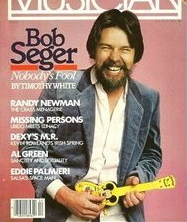Hallucinations, a blog about writing, trains, and Wire to Wire
Three Great Reads for 2018
My writing time in 2017 was almost entirely spent on the book I’m trying to finish, a story of kidney theft, Occupy, and a Jimi Hendrix guitar known as the Black Strat. The revisions continue. In my mind, I'm always just a couple months from being done.
But a few sentences of mine did find their way into print this past year—in the form of blurbs for three amazing books that should definitely make your must-read list for 2018.

Parts Per Million
The first is Parts Per Million, a socially conscious, fast-paced debut novel by Julia Stoops, coming in April from Forest Avenue Press. The book was a finalist for the PEN/Bellwether Prize for Socially Engaged Fiction. Robert Newman says "Parts Per Million reads like the bastard offspring of Graham Greene and Naomi Klein.” My take:

“Parts Per Million is a cry for justice and a journey through the heart. Julia Stoops brilliantly conjures the social and political unrest of the early 2000s. The war drums, the resistance, the secretive birth of the surveillance state—all lit by deep emotional honesty. Stoops’ keen eye sweeps us into the lives of three Portland activists—separate souls shakily united by a cause, a house, and a radiant artist/ex-junkie named Deirdre, who simultaneously illuminates and complicates their struggles. Compelling and deeply compassionate, Parts Per Million takes us to a time and place we thought we could forget, but can’t, and shouldn’t. Reading it may be the surest way to understand who we were then, and—in the tumult of our times—who we need to be today.”
A Thousand Distant Radios
 The second is A Thousand Distant Radios, an amazing debut collection of stories by Woody Skinner, already out on Atelier26. Skinner’s stories have been called mesmerizing, inventive and emotional, and extravgantly weird by Kevin Wilson, J. Robert Lennon and Kyle Minor respectively. I couldn't agree more. Honestly, your local independent bookstore should have this on the table by the front door, and if they don’t, get them to order it. My blurb:
The second is A Thousand Distant Radios, an amazing debut collection of stories by Woody Skinner, already out on Atelier26. Skinner’s stories have been called mesmerizing, inventive and emotional, and extravgantly weird by Kevin Wilson, J. Robert Lennon and Kyle Minor respectively. I couldn't agree more. Honestly, your local independent bookstore should have this on the table by the front door, and if they don’t, get them to order it. My blurb:
"Woody Skinner has a heat gun and he will strip the varnish off your soul. You’ll laugh while it’s happening and when he’s done you’ll feel more real."
Beautiful Music
The third is Beautiful Music, the story of a young man’s transformation through music by Michael Zadoorian. Set in early 1970s Detroit, Beautiful Music is coming in May 2018 from Akashic Books. Order it now, and put it on your list for spring. The Don Was blurb alone should convince you—"Michael Zadoorian has captured an era when Detroit simmered with anger and fear while it simultaneously reverberated with the joyous noise of rock and roll"—but in case you need an extra push, here’s my take:
"Like a song you can’t stop playing, Beautiful Music casts a spell on your heart. With clarity and tenderness, Zadoorian sweeps us into a life that we recognize as our own. Remember when you were lonely, scared, unsure, and then somehow found your own kind of bravery and actual, genuine joy? Beautiful Music will take you there—and give you the soundtrack to get you through."
All three books are terrific. Check them out – I'm sure you’ll love them.
Into the Bay
Harp, Slater, and Lane live their tangled, messed-up ways in a Michigan town I call Wolverine – actually the combination of two towns I love very much, Frankfort and Elberta. Shown in this beautiful video at 1:19. Watch it full screen. But please don’t move there.
"As the land grew closer, pinpoints of light dotted the north arm of the bay. To the south were the faint outlines of Pregnant Point. At the far end of the bay were three giant stumps rising high as the hills—Sunoco Oil tanks, no longer in use. He remembered when they were new. The ship’s horn sounded, thunderous in the night. A minute later they passed the lighthouse into the bay, and for a moment the land seemed to be opening her arms."
On Robert Stone
I can’t explain the effect Robert Stone had on me, except to say that his writing changed my life. I was 30 when the author Jack Cady told me to read Dog Soldiers. The book turned out to be stronger than the heroin at the center of its plot. The writing enchanted and stunned me. It rearranged my dreams.
If not for Cady’s encouragement and Stone’s example, I wouldn’t have spent 25 years writing Wire to Wire. I certainly wouldn’t have spent the past five years on my current novel, which owes a great deal to Dog Soldiers.
I was lucky to have two personal conferences with Stone, one disastrous, one comical. The bad one came on the last day of the Port Angeles Writers Conference. Five minutes into our one-on-one, Tobias Wolf showed up offering Bob a ride to the airport. He looked at me, said, “Keep it up,” and left.
We met again four years later at the Squaw Valley conference. The problem this time was that someone had taken our conference room. We decide to sit outside on the patio, but a fierce wind was whipping down the mountain. Stone turned the first page of my manuscript and the wind just ripped it away. I imagine it’s still out there somewhere. After about five minutes, we gave up.
I didn’t really mind. He had already given me more than I could ask.
In my essay, No Other Way Out for Bloom, I wrote about a passage from Hall of Mirrors that kept me from quitting during the 25 years it took to write Wire to Wire.
[Stone’s] character, Rheinhardt, spoke to me from a passage in A Hall of Mirrors. In it, Rheinhardt, an alcoholic, berates himself for the musical talent he has wasted:
“And that part inside you, that beautiful musical part that you are fond of regarding as a series of taut and polished springs is not that at all, but a thick and highly perishable stuff like cream which, when allowed to settle because you have not the energy and manhood to wrangle it, turns into a deadly and poisonous bile of which one rightly and subsequently dies.”
The energy and the manhood to wrangle it versus the deadly and poisonous bile: The stakes were pretty damn clear. Over and over I returned to that passage. On the days and nights when I hated my manuscript and hated my inability to finish, those words kept me going. I couldn’t quit. I didn’t want to be Rheinhardt.
At Politics and Prose in December 2013, Stone said, “What I try to keep writing about is hope, in the face of the persistent failure of hope.”
In a recent interview with Tin House, Stone said he wouldn't quit writing until he died.

___________________
Pick A Number
I’ve been using a random number generator lately to help me edit my manuscript. I started by printing the whole thing out and putting it in one of those cheap, plastic comb binders. It’s 353 pages, but I don’t want to mess with the first thirty right now. So, when I’m editing, I go to Random.org and set the parameters at 30 and 353. It generates a number, and I go to that page and make any changes on the hard copy. Then I get another number and go to that page, working my way randomly through the manuscript.
There are 50 pages left now, so frequently the number takes me to a page I’ve already done—in which case I just find the closest unedited page.
Why am I doing this? Mainly because I find it much less painful this way. I kind of dread going through the manuscript sequentially, but I don’t mind reading individual pages. This way keeps me from getting bogged down in bad spots, and I’m not tempted to change the story. It helps me look at sentences with a much more specifc attention. Oddly, the random sample helps me stay alert to tone and consistency. Finally, it adds an element of playfulness that I think is really helpful. It reminds me that while I want to be productive, I also want to have fun.
So, back to work. The number I just got is 59.

------------------------
>
I've got your number right here. New video by Miley Cyrus.
Posted in Writing
Special from the Segerfile
For the past 16 years, my other site – Segerfile.com – has covered the music of Bob Seger. That site is built entirely with the long-defunct Claris Home Page software, which runs only on the PowerPC platform. To update the site, I've kept an old black Powerbook on the shelf for years. Yesterday, the black laptop refused to boot up. Maybe that's not a tragedy – I post almost all Seger news on FB these days anyway. But tradition calls for an annual April Fool's Day post on the Segerfile. So, until I can get the black laptop running again, I'm posting the annual spoof here. Enjoy.

These Artists Thought They Were Simply Playing A Tribute to Bob Seger.
What Happened Next Will Change the Way You Think About Neutrinos Forever.
Oh wait. You’re already here. Hmmm. Would you mind going away and coming back a few times??? I need to get my page views up or corporate says they’re giving my job to an unpaid intern from South by Southwest.
Speaking of which (SEGUE! Ba-da-boom! Can interns do that? They can??? Crap.), this year’s SXSW was more frenzied than ever. In addition to attracting a huge cohort of women in skinny jeans and cowboy boots (approx. 97,000), it also featured a record number of Shriners in medical boots (approximately one. But still a new record.)

The festival was also notable for the number of “tributes” to other artists – longish events where lesser bands played lesser versions of songs that influenced other songs that influenced songs you actually like.
The Lou Reed tribute was a case in point. It began Friday evening in the packed Paramount theatre and is scheduled to conclude by Memorial Day or when Wayne Kramer takes the stage, whichever comes first. So far, the tribute has featured an unforgettable half hour of music and 340 set changes.
A tribute to Jimi Hendrix was also held, timed to coincide with the unveiling of the new Jimi Hendrix postage stamp.
The tribute began with an amazing and seemingly impromptu set of opening remarks by a baldish administrator from the United States Postal Service. Performing solo, and dressed in stunning Casual Friday attire in honor of Jimi, the administrator wowed the multitudes with his virtuoso introduction, moving from rhetorical to declamatory techniques and back again. Holding his notes behind his back, he spoke fluently about commemorative stamps of all types, incorporating passages of epideictic and didactic hortatory, dive-bombing into a mixture of Pig Latin and jargon, before ending with dissuasive and beatbox elements tracing back to Aristotle and Run DMC.
“It was a total mind-blower,” the guy next to me did not say. “At first we thought, what is this? As it went on, we realized history was being made. Bland introductions will never be same again. I thought there were three guys delivering prepared remarks simultaneously, but it was just this one dude.”
Letters using the new Hendrix stamp will be delivered by dragonfly and will take “about a half a day,” to get where they’re going, the administrator claimed. At which point he set his speech on fire.
After the giant Jimi banner collapsed, a number of musicians who should never be allowed to listen to Hendrix songs, let alone play them, took the stage to demonstrate through contrast why Jimi was the best. The crowd, dazed by a Level Four Contact High, murmured approvingly while dreaming of snack food.

The Postal Service honored the most innovative guitar player ever with a "stamp" for an outdated communication tool called a "letter." What happened next will blow your mind!!
But of course, it was the Seger Tribute that was most anticipated. A full half of all festival attendees staying in Room 330 of the Radisson Hotel said it was the best SXSW tribute they had ever briefly imagined while waiting on line at Amy’s Ice Creams.
Like ancient Gaul, the Seger tribute was divided in three parts. “The Raw Years," “The Radio Years," and “The Kid Rock Years.”
The original plans called for the post office to unveil a stamp honoring Seger, just as they did for Jimi. However, plans broke down when a) Punch sent the artwork back to be redone for the 15th time, b) Bob said the adhesive on the back of the stamp needed a little more acacia gum and a slightly higher grade of polyvinyl alcohol before it could be released, and c) focus group testing revealed customers believed that using a Bob Seger postage stamp would mean their letters would be delivered in about a year, or the year after, or three or four more years, or possibly much later, if at all, depending on when the postal muse struck.
So the show went on without an official stamp. But what a show it was.

For The Raw Years, a reanimated James Brown belted out “Gets Ya Pumping” and “Lucifer.” To the delight of several, a reanimated Otis Redding jumped onstage and joined Brown for a duet of “Red Eye to Memphis.” True Seger aficionados experienced an unforgettable rush of fanboy superiority, while 99.3% of the crowd turned to each other and asked, “What the hell are they playing?” Emergency responders did a terrific job of handling the epidemic of shrugs that followed.
The Radio Years segment did not go as well, unfortunately. First up was “Against the Wind” by a reanimated version of The Eagles. The actual Eagles wanted to perform, rumor had it, but promoters, attuned to the average festival-goer’s limited attention span and need for maximum stimulation, preferred the livelier, reanimated version of the band.
The next performer, Suzanne Vega, delivered the most heartfelt tribute of the night. “This is dedicated to the man who set the standard for everyone who followed. A man who spoke for all of us, a genuine troubadour for humankind, he always lived his ideals – from his days as a young communist, to his support of peace and freedom everywhere. There will never be another like him, and I miss him terribly.”
The crowd, slightly confused, was nevertheless moved – until she launched into a medley of “Where Have All the Flowers Gone” and “The Lion Sleeps Tonight.” Seger fans, enraged that their hero had been confused with a banjo-playing folk singer for the one-zillionth time, stormed the stage, intent on tearing Ms. Vega from limb to limb.


So it was perhaps provident that Ted Nugent chose that particular moment to wander up to the mic toting a .223-caliber Bushmaster XM15-E2S rifle with a 30-round magazine, which he proceeded to empty into the air, quieting the crowd. “Where’s Rand Paul? he asked. “It this the CPAC convention?”
Realizing he was in Austin, he began to unwind a long rant about “subhuman liberal varmints addicted to cellphonesboozeandbirthcontrol.” Seger security man John Rapp reacted quickly, firing a tranquilizer dart into the right butt cheek of the Motor City Madman Who Doesn’t Actually Represent the Motor City in Any Conceivable Way, thus allowing the show to continue.
After a long set change, a new band, The Fauntleroys, took the stage and attempted their version of “Turn the Page.” After 17 false starts, the band left.

Then came the night’s dramatic finale, featuring a five-story Silver Bullet that rose from the stage. Posed provocatively atop the bullet was SXSW’s biggest celebrity, Lady Gaga, who belted out an autotuned, hip-hop version of “Old Time Rock ‘n’ Roll,” modifying the lyrics slightly to remove any reference to “old,” “time” or “rock ‘n roll.”
Unexpectedly, as she began bootie shaking through her final number – “Twerking on My Night Moves” – Ms. Gaga lost her footing on a bit of synthetic vomit from her previous show. Slipping off the bullet, she went into a five-story swan dive to the stage below.
What happened next was a textbook example of professionalism in action. Immediately, Ms. Gaga’s expert team of highly trained sycophants swung into action, producing their cellphones, tweeting and posting on Instagram. For the next fifteen seconds, #GagaCanFly and #AboutToGoSplat? were trending worldwide on Twitter, which Ms. Gaga’s social media director later heralded as “an unsurpassed triumph.”
At first, a collective cry of relief issued from the crowd, as it appeared Ms. Gaga’s fall had been broken by a six-foot pile of Doritos. Roadies who rushed to the salty pile of processed, nutritionless treats were the first to discover the staggering truth.
In fact, the singer’s fall had not been broken by the crispy snacks, as originally hoped. Rather, Lady Gaga herself had broken into a pile of Doritos. Representatives of PepsiCo, attempting heroic measures, quickly scooped the chips into a dozen extra-large garbage bags. “We’ll reassemble her!” their leader shouted. “To the factory!”
The evening thus seemed headed for a happy ending. Unfortunately, the PepsiCo team chose to take a shortcut through the Hendrix tribute. When they emerged on the other side, only three of the 12 garbage bags remained.
“I didn’t really think I’d like Lady Gaga,” one hardcore Hendrix fan said. “But she was delicious.”
Later in the night came the sad report that PepsiCo would be unable to rebuild the pop diva. “We ask only for your support, and God’s,” a spokesmodel mourned. “With the chips we’ve got left, we can only make Miley Cyrus.”
Contacted in his home outside Detroit, Seger commented only briefly on the event. “A tribute for me south by southwest of here? You mean Lincoln Park? Imagine.”

Posted in Music
Recent Posts
Archives
- December, 2017
- December, 2015
- January, 2015
- November, 2014
- April, 2014
- March, 2014
- December, 2013
- September, 2013
- July, 2013
- March, 2013
- January, 2013
- November, 2012
- October, 2012
- July, 2012
- May, 2012
- March, 2012
- February, 2012
- December, 2011
- November, 2011
- October, 2011
- September, 2011
- August, 2011
- July, 2011
- June, 2011
- May, 2011
- April, 2011
- March, 2011
- February, 2011
- January, 2011
- December, 2010
- ,
Categories
Links
- My Essay on Bloom: No Other Way Out
- Playlist in LargeHearted Boy
- A Book Brahmin Essay for Shelf Awareness
- Powell's Blog: Sex & Money
- Powell's Blog: Riding Freights
- Powell's Blog: Burning Down the House
- Powell's Blog: Bob Seger
- Powell's Blog: Thank You
- An Interview with Kathleen Alcala
- An interview with Laura Stanfill
- Video with Yuvi Zalkow
- Interview with Noah Dundas
- Tin House Blog: Motor City Fiction
- Blog on Occupy Writers
- W2W Essay for Northwest Book Lovers
- W2W Essay for Poets & Writers
- America Reads: Page 69
- America Reads: My book, the movie
- America Reads: What I'm Reading
- Interview with Be Portland
- The Oregonian: Where I Write

 Subscribe to the RSS feed
Subscribe to the RSS feed